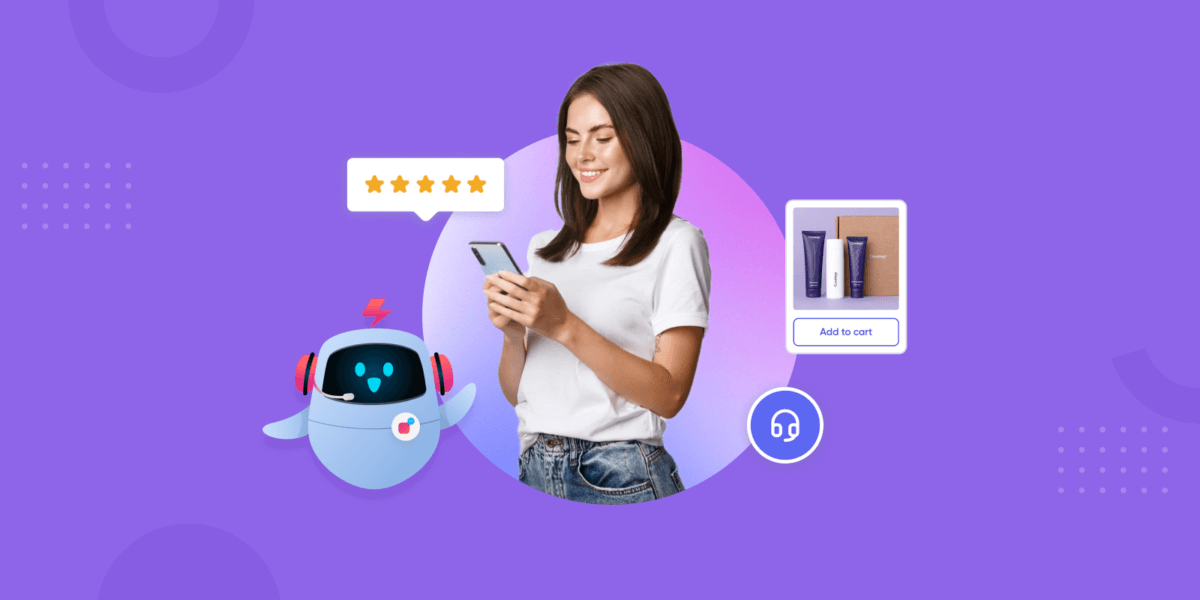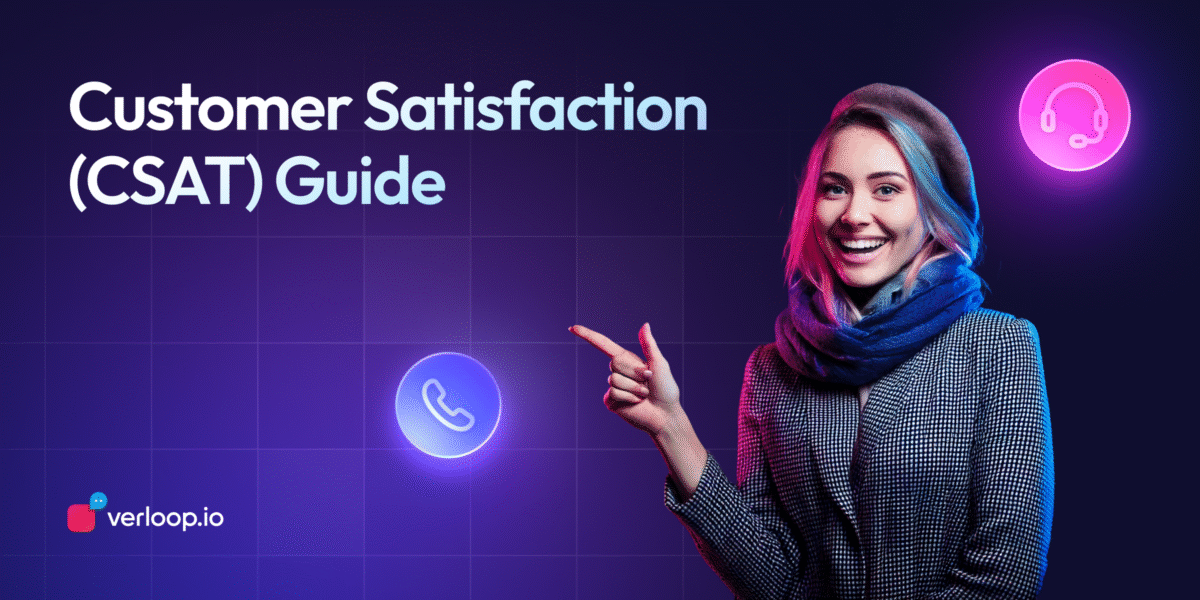Using a Mobile App Chatbot for Customer Service
- June 11th, 2025 / 5 Mins read
-
Aarti Nair
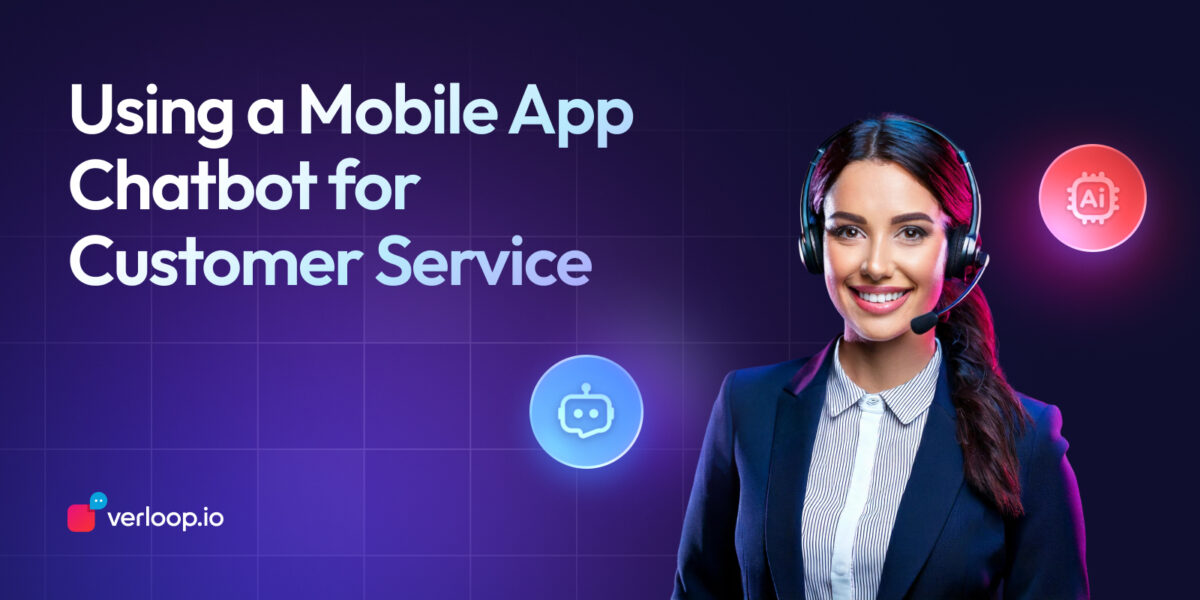
Using a Mobile App Chatbot for Customer Service
- June 11th, 2025 / 5 Mins read
-
Aarti Nair
Have you ever wished your app could handle customer queries the moment they arise—without tying up your team or your budget?
With over 257 billion Android and iOS downloads each year (and a steady 1% growth since 2023), mobile is now the main gate to your services. Yet many businesses still rely on emails or call centres that can’t keep up with demand.
Imagine if your retail or banking app could provide instant, in-app support.
Guiding users through a payment, answering product-availability questions or resetting passwords—any time of day or night.
By embedding live chat and AI chatbots directly into your app, you can deliver round-the-clock assistance, reduce support costs by up to 40 per cent and free your staff to focus on complex issues that truly need human attention.
In this post, we’ll look at how mobile-app chatbots help businesses cut overheads, boost customer satisfaction and maintain a competitive edge. Ready to see how a simple chat feature can turn every tap into an efficient service interaction? Let’s begin.
Suggested Reading: Why Customer Support Today is all about Self-Service
Why In-App Chatbots Make Sense for Customer Service
So, why are more businesses turning to mobile app chatbots for support?
Because customers expect speed, and businesses need scale.
Today’s users want answers the moment a question pops into their heads—whether they’re checking account balances, tracking an order or troubleshooting a login issue. And they’re doing all of this from their phones. Waiting for a reply via email or navigating long IVR menus? That’s no longer good enough.
By placing a chatbot directly inside your app, you’re offering support where customers already are. No switching tabs. No jumping to external help centres. Just real-time assistance, right at the point of need.
But the benefits go beyond just convenience for users. For businesses, in-app chatbots mean:
-
Lower support costs: Automating FAQs and simple queries can reduce ticket volumes significantly—by as much as 40%, according to industry data.
-
Better resource allocation: Your human agents can focus on more complex cases, while the chatbot handles repetitive questions efficiently.
-
24/7 availability: Whether it’s 2 p.m. or 2 a.m., your users can get help without depending on working hours or staffing limitations.
-
Faster resolutions: With integrations into your backend systems, chatbots can fetch order updates, payment details or account information in seconds.
Still unsure if it’s the right fit for your business?
Consider this: many leading banking institutions like Yes Bank and Axis in India, ADIB in the United Arab Emirates and retail brands have already implemented in-app chat and AI automation—not as an experiment, but as part of their core support strategy.
Suggested Reading: 5 Integrations to Improve Customer Service with Conversational AI
You can also give your chatbot a personality to understand and address numerous types of similar issues and provide timely solutions in the voice and tone of your choice.
Are chatbots on mobile good for customer service?
The inclusion of chatbots in the area of customer service is increasing day by day. We will explore some statistics to demonstrate the effect of chatbots on customer service.
Based on the available estimates, a chatbot for customer support was used by over 67% of customers who interacted with businesses in the past year. The data also suggests that nearly 40% of customers are only interested in getting their query solved regardless of whether a bot or actual human is resolving it.
A report suggests that nearly 50% of businesses are moving forward to invest more in building and integrating chatbots rather than mobile apps. Both businesses and financial institutions have shown interest in employing chatbots for customer services.
Hence, it is clear that a mobile chatbot for customer support is an excellent idea.
How Mobile App Chatbots Actually Work?
Now that we’ve looked at why businesses are investing in in-app chat support, let’s break down how it all works behind the scenes.
When a user opens your app and initiates a chat, the chatbot kicks in immediately—often with a simple greeting like “Hi there, how can I help you today?” From there, it can handle a wide range of requests depending on how it’s been trained and integrated into your systems.
Here’s what that looks like in practice:
-
For a retail app:
A customer types, “Where’s my order?”
The chatbot pulls order data from your backend, matches the tracking ID and replies with the current delivery status—often within seconds. -
For a banking app:
A user says, “I need a copy of my last statement.”
The chatbot authenticates the user (securely), fetches the document and shares a downloadable link right within the chat. -
For both sectors:
Chatbots can schedule appointments, answer store location queries, help with account resets, initiate returns or even escalate complex issues to a live agent—without the user ever leaving the app.
What makes this experience seamless is the chatbot’s integration with your systems—CRM, order management, payment gateways and more. With this setup, it doesn’t just “talk,” it acts.
And if you’re using an AI-powered bot, it also learns from previous conversations, improving its responses over time and identifying common queries that might need new workflows or FAQs.
How to Get Started with In-App Chatbots
Thinking of adding a chatbot to your mobile app? You don’t need to overhaul your entire support setup to make it happen. The key is to start small, stay focused, and choose a solution that works with your existing tools and processes.
Here’s a practical approach:
1. Identify Common Use Cases
Start by looking at the most frequent queries your support team handles. Are customers constantly asking for order updates, password resets or payment confirmations? These repetitive tasks are ideal candidates for automation.
2. Choose a Platform That Integrates Easily
Your chatbot should connect with your backend systems—whether it’s your CRM, order management tool, or payment gateway. This ensures that it can do more than just answer questions; it can fetch real data, update records, and take meaningful action.
3. Design the Right Conversation Flows
Think about how your customers typically speak—not just what they ask. Use simple, natural language in your chatbot scripts and account for variations in phrasing. Many platforms offer templates or “recipes” to help you get started quickly.
4. Enable Live Agent Escalation
A chatbot can handle a lot—but not everything. Make sure there’s a smooth handoff to a human agent when the conversation gets too complex. In-app chat makes this easy, keeping the context intact without the customer repeating themselves.
5. Monitor, Measure and Improve
Once live, track metrics like resolution rate, bot deflection rate, customer satisfaction and average response time. Use these insights to tweak your flows, add new intents, and train the bot to handle more cases over time.
By following this step-by-step approach, you can roll out a chatbot that’s helpful from day one—and keeps getting better with use.
Mobile Application Chatbots for Customer Service Examples
Banking institutions are using chatbots in Android and iOS mobile applications to assist customers with purchasing policies and resolving banking issues, such as reporting a lost card or changing an address. Similarly, there are many other ways chatbot can be used, let’s understand:
1. For better customer support
With the presence of chatbots on mobile, users don’t have to browse through a vast pile of FAQs to find solutions for their issues; a mobile application chatbot assists them with their questions.
Customers don’t have to leave the mobile app to find help. Automated replies reduce delays in attending users’ queries, making them happy with the service and increasing loyalty.
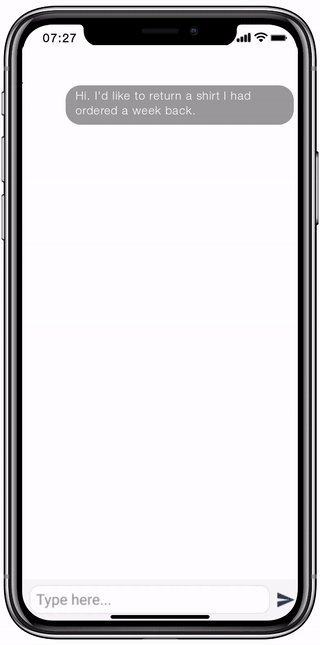
2. For boosting response rates
It is hard for a human customer support executive to respond to every query. Due to which many customers cannot resolve their queries, resulting in a lack of interest in your brand.
You can set up chatbots to respond to every query and provide proper solutions to them immediately. Thus, you can boost your business’s response rates. Not only commercial businesses but also financial institutions use mobile chatbots for customer queries.
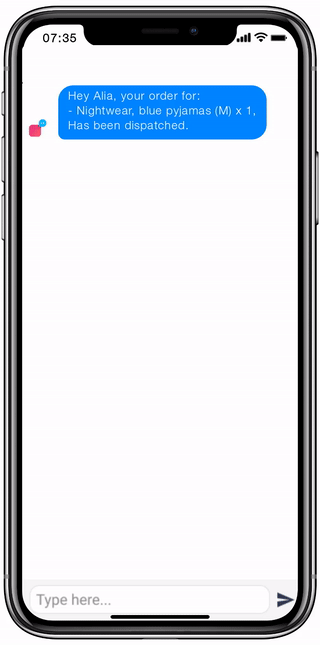
3. For better customer communication
You can optimise your chatbot with the personal data of your users, (stored in your CRM) when they come in contact with your chatbot. This data can be users’ names or emails or even their previous communication with your brand.
Using this information, your chatbot on the mobile app can treat your customers with personalised service by carefully addressing their every question; this will bring in good ratings to your service and more customers.
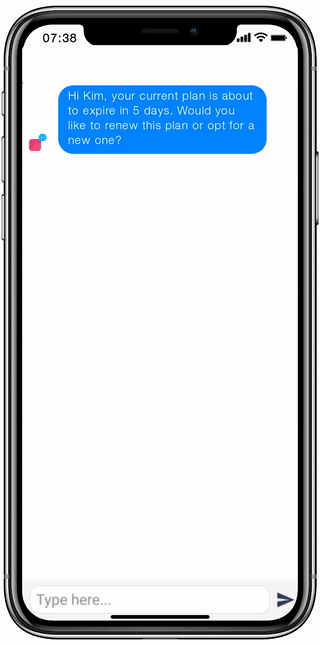
4. For collecting feedback
As we saw above, customers spend a lot of time on their mobile devices. Your business can collect feedback from your product users by employing a mobile chatbot for customer feedback and using them to improve their services.
Customers are generally reluctant to share their feedback with brands. They usually share the feedback when they’ve had a negative experience. This leads to a low CSAT score and higher costs to acquire new customers.
With chatbots, brands can make feedback forms more interactive and simple. This way, more customers can give their feedback, both positive and negative. And hence, a balanced view of your product and services.
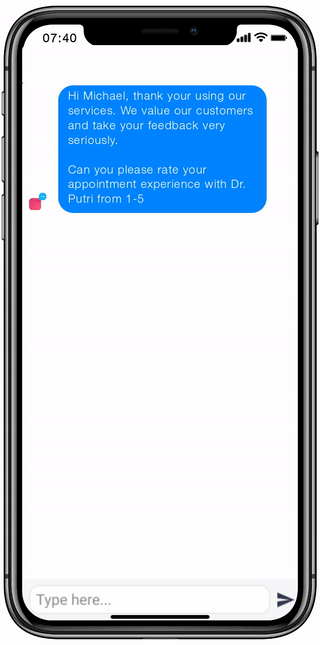
5. For onboarding customers
Customers usually struggle to use the product the way it is intended to. The main reason behind this is a lack of knowledge and proper onboarding. With mobile app chatbots, companies can onboard their users in a streamlined fashion.
What’s more, since this process is automated and powered by AI, customers can select their preferred time to be onboarded. Companies can also AI-based mobile chatbots for eKYC and document sharing.
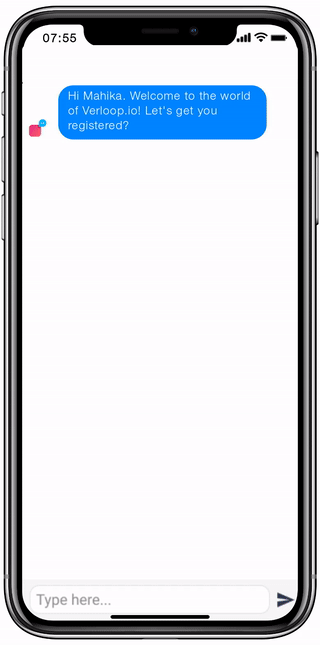
Real Business Benefits of Using Mobile App Chatbots
Let’s talk results—what can businesses actually gain from adding a chatbot inside their mobile app?
You’ve already seen the promise: faster support, lower costs, better customer satisfaction. But how do these translate into tangible outcomes? Here’s what businesses across sectors are reporting after implementing in-app chatbots:
1. Lower Support Costs
By automating common queries—like order tracking, password resets, or basic account questions—companies can reduce the volume of tickets that reach human agents. Many report a 30–40% drop in support costs, simply by letting the bot handle the routine while agents focus on more complex needs.
2. Faster Resolutions, Happier Customers
Customers want answers now. In-app chatbots cut wait times dramatically, often resolving queries within seconds. No more switching channels or waiting for emails. The result? A noticeable uptick in CSAT (Customer Satisfaction) scores and reduced churn.
3. 24/7 Availability Without Extra Headcount
Your app is always on—and with a chatbot inside, your support can be too. Whether it’s a customer checking their balance at 11 PM or browsing products on a Sunday afternoon, chatbots provide instant help without needing to expand your team or stretch shift coverage.
4. Improved Agent Productivity
When bots handle repetitive queries, support agents can focus on what really matters—retaining high-value customers, resolving complex issues, and improving service quality. Many businesses see a reduction in agent burnout and higher team efficiency.
5. Better Data, Smarter Decisions
Chatbot interactions provide a wealth of insight. What are customers asking most? Where are they getting stuck? Which products are frequently queried? This data helps product, support and marketing teams make more informed decisions—fast.
In short, it’s not just about adding a chatbot—it’s about rethinking how mobile support can be smarter, leaner and more effective.
Automate Support for your Customers with Mobile App Chatbot
Considering the points mentioned above, there’s no room for doubt that chatbots on mobile are the future of customer support. It’s an additional channel to support customers, only with more benefits.
Mobile chatbots for customer support also reduce the load on customer support agents. Your brand can provide faster, accurate and secure replies to customers. What sets them apart is AI-powered chatbots also carry forward context, giving an omnichannel experience.
Verloop.io’s conversational AI platform for customer support offers a delightful experience to your customers. The platform integrates with your tools, channels, and other software to provide a personalised, 24×7 service that improves not only the customer’s experience but also the agent’s efficiency.
If your customers are already using your mobile app—and if your support team is answering the same questions again and again—it might be time to bring the conversation in-app.
Chatbots aren’t meant to replace human support. They’re designed to take care of the basics so your team can focus on what matters most: solving complex problems, building relationships and improving customer experience where it counts.
And the best part?
You don’t have to start big. Identify a few key use cases, roll out your chatbot for those, and learn as you go. You’ll likely see benefits faster than you expect—fewer support tickets, shorter wait times, and happier customers.
So, is your business ready to meet customers where they already are?
If the answer is yes, an in-app chatbot might just be the upgrade your customer service needs.

Frequently Asked Questions
- How do I create a chatbot for a mobile app?
Start by identifying common customer queries, then choose a chatbot platform that integrates with your app. Design conversation flows, connect backend systems (like CRM or order management), and test the experience before going live.
2. Can I integrate a chatbot into my existing app?
Yes. Most chatbot platforms, including Verloop.io, offer SDKs or APIs that can be embedded into Android and iOS apps without needing a complete rebuild.
3. How do I add a chatbot to an Android application?
You can use a chatbot SDK or API provided by your chatbot vendor. Simply integrate it within your app’s codebase, configure the bot’s flows and connect it to your backend systems for real-time data handling.
4. How can Verloop.io help with adding an AI chatbot to banking and retail applications?
Verloop.io offers AI-powered chatbots that are optimised for mobile, with secure integration capabilities for banking and personalised workflows for retail. Our bots support multilingual conversations, live agent handovers and intelligent automation to reduce support load and improve user satisfaction.
5. Can I automate FAQs in my mobile app chatbot?
Absolutely. You can set up your chatbot to handle FAQs like delivery tracking, payment issues, account settings and more—freeing your agents to focus on complex cases while providing customers with instant answers.






